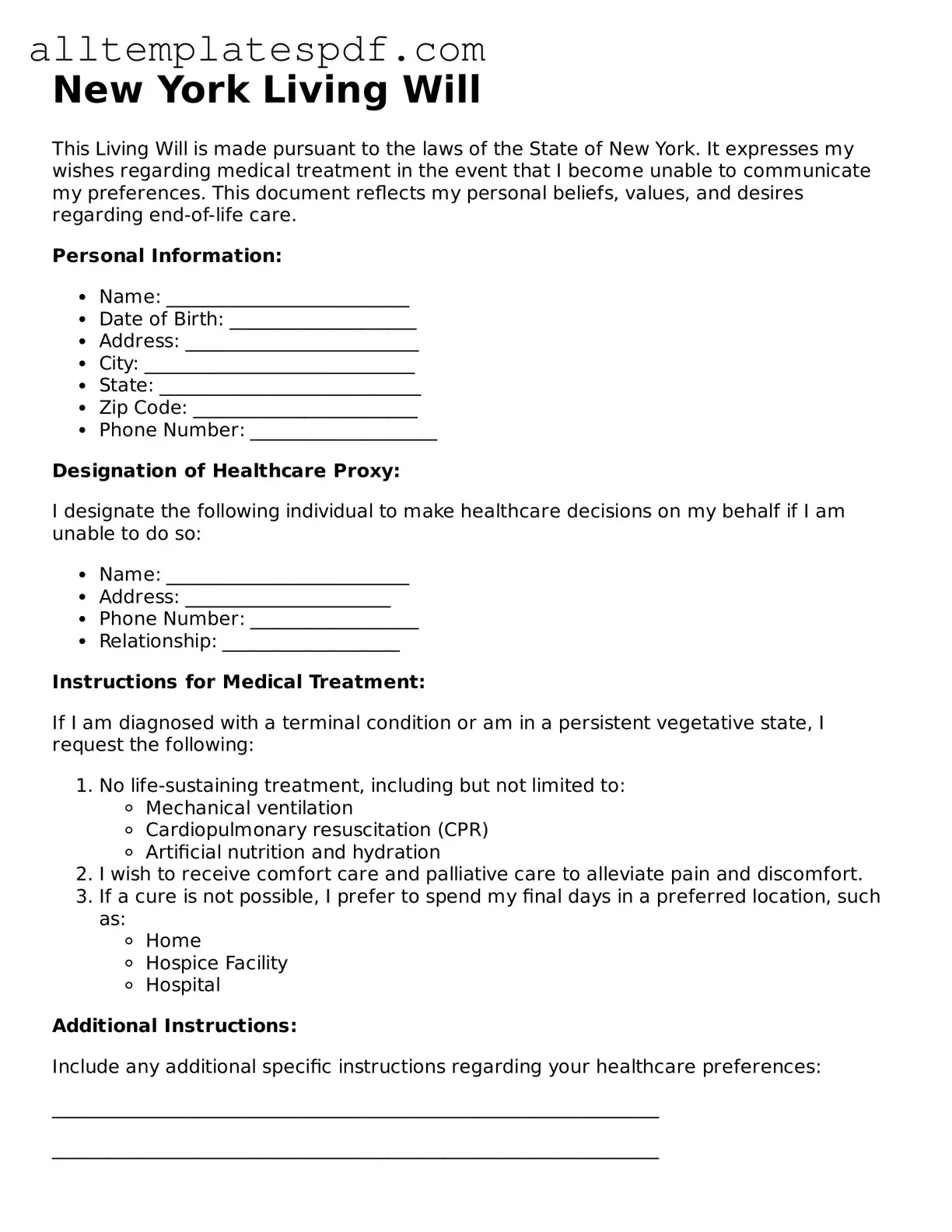Filling out a New York Living Will form is an important step in ensuring that your healthcare wishes are respected. However, many people make common mistakes that can lead to confusion or even legal issues down the line. Understanding these pitfalls can help you avoid them.
One frequent mistake is not being specific enough about your wishes. When you state your preferences for medical treatment, vague language can lead to misunderstandings. Instead of saying you want "everything done," clarify what that means for you. Do you want all possible life-sustaining treatments, or are there certain interventions you want to avoid?
Another common error is failing to sign and date the document properly. A Living Will is not valid unless it is signed by you and, in some cases, witnessed or notarized. Skipping this step can render your intentions meaningless. Always check the requirements for signatures in New York to ensure your form is legally binding.
Many individuals overlook the importance of discussing their Living Will with family members. Without open communication, loved ones may not understand your choices. This can lead to conflicts or decisions being made that do not align with your wishes. Take the time to explain your decisions to those who will be involved in your care.
Some people forget to review and update their Living Will regularly. Life circumstances change, and so can your preferences. It’s wise to revisit your document every few years or after major life events, such as a marriage, divorce, or significant health change. Keeping your Living Will current ensures it accurately reflects your wishes.
Another mistake is neglecting to choose a healthcare proxy. While a Living Will outlines your wishes, a healthcare proxy designates someone to make decisions on your behalf if you are unable to do so. Failing to appoint a trusted individual can lead to uncertainty during critical moments when decisions must be made.
People often forget to consider the implications of their choices. For example, opting for "do not resuscitate" (DNR) orders can have serious consequences. It’s essential to understand what each option entails and how it may affect your care. Take the time to educate yourself about the medical terms and scenarios included in the form.
Finally, many individuals do not seek professional advice when filling out their Living Will. While it may seem straightforward, the nuances of healthcare laws can be complex. Consulting with a legal expert can provide clarity and ensure that your document meets all legal requirements, protecting your wishes effectively.
